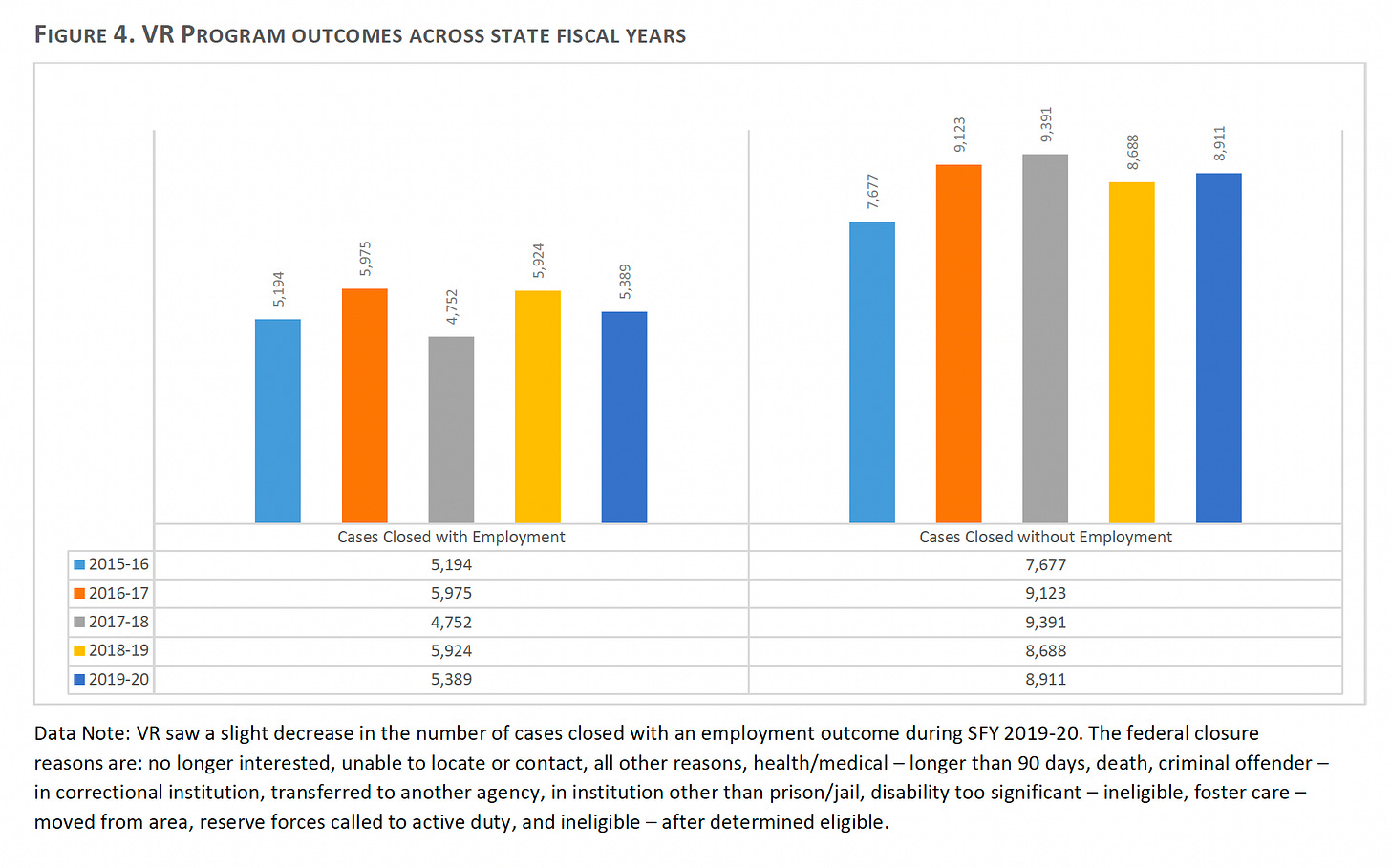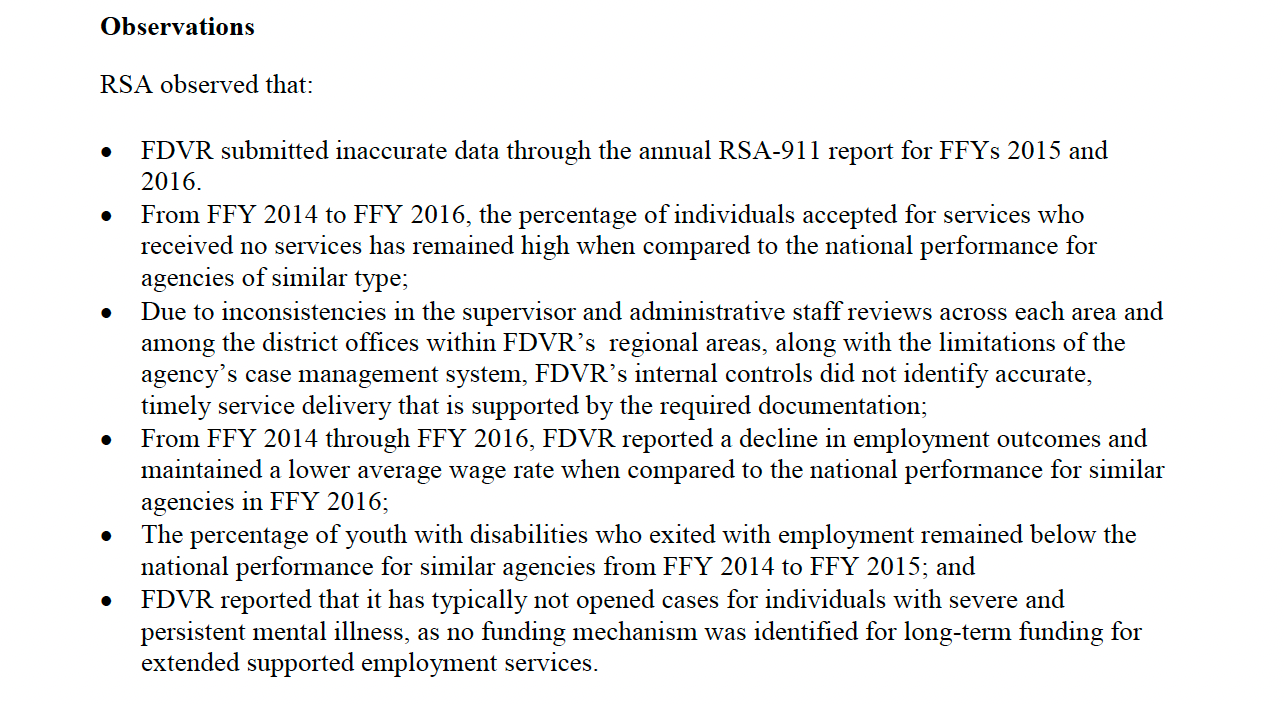If Your Child Has A Disability, Get Loud
Fifty years ago Nixon signed the Vocational Rehabilitation Act and it's been plagued with problems from the beginning. Let's get into it.
Democratic presidential nominee, Senator George McGovern, took to television to hit President Richard Nixon hard on his pocket veto of the Rehabilitation Act. McGovern, who had long championed equal education for all Americans, called on Congress to override Nixon’s veto. Judy Heumann, the “mother” of disability rights took to the streets. After he was reelected, Nixon doubled down during his second inaugural speech saying, “In our own lives, let each of us ask not just ‘What will government do for me?’ but ‘What can I do for myself?’”
Months of protests and political gamesmanship followed. Congress finally passed the Vocational Rehabilitation Act of 1973 and Nixon signed it on September 26, 1973. The law has been revisited by Congress a half dozen times, including the 2014 amendment requiring states to spend fifteen percent of their budget on disabled youth who are preparing to transition into early adulthood. Every time, Congress has renewed its commitment to full inclusion at work, school, and in public spaces, but often they had to be shamed into it. This is a clarion call. Another storm is brewing.
The law, which didn’t even include Native Americans until 1978, is America’s answer to systemic barriers that were making moving around, living independently, achieving academically, and finding employment more difficult. Today - fifty years after Nixon and McGovern squared off on helping disabled students prepare for employment - Congress sends $3.7 billion dollar per year to states and, almost universally, states suck at managing those funds and services.
Pay & Process Problems
Historically, individuals applying for services undergo a lengthy and intrusive process, which is frustrated by overworked, underpaid Vocational Rehabilitation (VR) Counselors. According to a 2016 piece in Disability Scoop, across America Counselors, who are required to have a Master’s level degree, earn a median salary of $38,560 (Bureau of Labor Statistics) and maintain a caseload of nearly two hundred individuals. In May of 2022, the Center for American Progress (CAP) issued policy recommendations with a bold statement that Vocational Rehabilitation needs “substantial improvements to address the growing needs of the disability community,” confirming that the program has “had significant problems for years, with high staff turnover and unwieldy caseloads.”
The budget formula is also problematic. The $3.7 billion dollars in federal funding depends on matching dollars from the states. In short, every dollar a state contributes to VR services triggers almost four dollars from the federal government. When a state doesn’t take full advantage of the match, millions of hours of services are lost. The CAP report found that “last year alone, states returned $167 million” in unused funds to the federal government. When a state relinquishes funds, other states can request them, but only if they achieved their full match.
Nearly all workforce development programs are administered by the US Department of Labor, including Vocational Rehabilitation services triggered by a work-related injury. Not VR. It falls under the US Department of Education, Office of Special Education and Rehabilitative Services, which also oversees disability-related education services, including Special Education services. The Department is responsible for approving proposed state plans, auditing how VR funds are used, monitoring program effectiveness as well as providing technical assistance and guidance to states.
Florida, As An Example
Governor DeSantis has given his time and energy to supporting services for Floridians who have been diagnosed with a disability. Early in the administration, the First Lady, Casey DeSantis, spearheaded several initiatives targeted at the alarming increase in mental health struggles young Floridians were facing. In May 2022, the Governor personally took time to present the “Everyday Hero” to several awardees. The DeSantis team has elevated the disability rights conversation in Florida and the Governor should take more credit for that but, unfortunately, until he directs the Florida Department of Education to create significant structural changes (or better yet, move VR services to the Florida Department of Economic Opportunity), Florida will continue to struggle.
Currently, the Department employs two-thousand five hundred employees; one thousand (40%) of whom are dedicated to the Division of Vocational Rehabilitation. According to the 2021 annual report presented to the Florida legislature, thirty-nine (39%) of the Division’s $194 million dollar budget goes to administrative overhead, including employee salaries, with over $7.0 million going to “indirect costs.” In October, the Division announced that fifty percent (50%) of Counselor positions were vacant. As of March 2023, there are three hundred and forty-nine vacant positions advertised.
The annual report for 2020-21 reported serving 46,333 Floridians between the ages of fourteen to sixty-five; 5055 of whom “got or kept a job.” On average, those 5,055 people worked twenty-nine (29) hours per week and earned $308 weekly. In October 2021, the Division relinquished over $21 million dollars to the US Department of Education. In other words, the American taxpayer paid VR $34,178 to help citizens get or keep a job that pays, on average, just over $15,000 per year ($194,264,850 - $21,494,358 = $172,770,492 / 5055 = $34,178). While 5,055 found some sort of employment, 8,911 saw their VR case closed without employment
The $21 million dollars relinquished in 2021 brings the total amount of relinquished funds since 2018 to approximately $50 million dollars. In 2018, the US Department of Education issued a troubling monitoring report about the problems within VR citing a lack of fiscal and programmatic oversight and, more troubling, VR submitted inaccurate data to the federal government for two consecutive years.
The US Department of Education is scheduled to return to Florida for a follow-up audit in 2023. There is, apparently, no requirement for the federal monitoring team to return sooner than every five years, even in the face of significant findings. Furthermore, there is no reason to anticipate an improved monitoring report this year. The Florida Department of Education, Office of Inspector General is responsible for auditing the Division of Vocational Rehabilitation programmatic oversight of procured services delivered through nonprofits and school districts, for example. Of the thirteen audits conducted since 2018, every single one of them has found that VR was not providing proper oversight.
Equity of services in Florida are alarming as well. In 2014, Congress specifically called on states to improve services to minorities. The law states that “Ethnic and racial minorities tend to have disabling conditions at a disproportionately high rate,” according to Congress. “Among Americans ages 16 through 64, the rate of disability was 12.1 percent; among African-Americans in that age range, the disability rate was more than twice as high, at 27.1 percent; and for American Indians and Alaska Natives in the same age range, the disability rate was also more than twice as high, at 27.0 percent.” Still, seven years later, Florida’s VR reported serving thirty-one thousand (31,058) white Floridians but only eleven thousand seven hundred and ninety-two (11,792) black Floridians and eleven thousand nine hundred and eight (11,908) Latino Floridians. Fewer than 1,000 Asian Floridians and fewer than 500 Native Americans received services.
Florida’s most recent VR needs assessment finds that services are bottlenecked – especially in rural communities – due to a lack of transportation and a lack of service providers. There isn’t a VR office in twenty-seven of Florida’s sixty-seven counties (40%). When individuals do get VR services, they wait - on average - over 190 days for them. There are valid reasons why service providers and agency employees are running for the hills, but I believe Florida is uniquely positioned to lead this dialogue nationwide.
Why do I believe that? Because, the Ron DeSantis who wrote about “legislative malpractice and administrative incompetence,” wouldn’t let the sun go down without demanding answers. The Ron DeSantis who campaigned against me in 2012, railing against government bloat and system inefficiencies, would never be okay with an agency that spends $34,178 to help people find a $15,400 job. And certainly, the Ron DeSantis who recoils against “bureaucrats” given too “wide a berth,” would be incensed by public servants who fail to “maintain fidelity to the true object of the government.”
“If there is someone who is willing to work hard and make the most of their God-given abilities, but they run into roadblocks because of bad policy, we are not doing justice to the people in this country and we’re not giving them the opportunity that they deserve.” Senate Candidate, Ron DeSantis, February 21, 2016
Improving VR isn’t just right…it’s a right
At its core, the Vocational Rehabilitation Act of 1973 is a civil rights law for individuals with “physical or mental impairments that substantially limits one or more major life activities.” Those services include medical and psychological support services, medical and psychological treatments, supported employment, independent living opportunities, and assistive technology. These services are complex on a good day. State policies across the nation have turned the complex into the absurd, which is effectively infringing on the civil rights of millions of Americans.
Moreover, federal law requires states to build a structure that is individual-led. Meaning the individual being served is the decision-maker. VR, in concert with the Individuals with Disability Education Act (IDEA), Americans with Disabilities Act (ADA), and Social Security Disability (SSDI) as applicable, is required to be financially responsible for “a wide range of goods and services that are connected to a person’s vocational goal.”
In other words, when someone says - as Vocational Rehabilitation Director, Brent McNeal told a Florida audience of parents - that Vocational Rehabilitation has the authority to put “caveats” on an individual’s vocational goals or that it has to be “determined” “by the individual and their Counselor” that their goal is “not setting them up for failure,” that just ain’t true. Counselors are required by federal law to help individuals prepare for their goals, not dictate a goal to them.
Statements like that do ripple through the system. I have seen adults place artificial labels and limits on teenagers countless times over the last twenty years. Just recently, I worked with one young man who struggled to finish high school. As he was about to realize his goal of walking across the graduation stage, he turned his attention to the possibility of college. When he told his VR Counselor about his new goal, she flat-out rejected him. When I interjected, she said, “I don’t think he can be successful.” That young man had a learning disability and was dealing with childhood trauma but there was absolutely no indication that, with the right support, he couldn’t succeed at the college just down the road from his home. It was a demoralizing moment for him. I considered it straight-up malpractice.
Should that happen to you, push back and, if necessary, push back harder.
Join Us!
Take a minute to read about the life of incredible the “Mother of the Disability Rights Movement,” Judy Heumann, who passed away this week. “Heumann is perhaps best known for leading the longest occupation of a federal building in American history, paving the way for some of the first government laws and regulations guaranteeing equal access for people with disabilities.” Then ask yourself - Is it time for another Capitol Climb?
Also, give a follow to @RebeccaCokley and @StudentLedIEP and @OCALIofficial and @Diverse_Edu and @BlackDisability and @DisabledWriters
Florida is a mess but it’s not alone.
Georgia –
Colorado, Minnesota, Louisiana –
Go Deeper
USDOE Rehabilitation Services Administration Monitoring Reports –
USDOE Rehabilitation Services Administration Report to Congress 2017 to 2020 -








